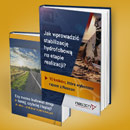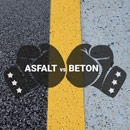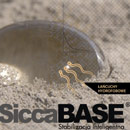Choosing an early education framework is a significant decision for parents and educators alike in the UK. The key lies in understanding various curriculum guidelines that govern early years education, ensuring that they align with the values and educational goals one wishes to achieve. With numerous frameworks available, each presenting unique philosophies and pedagogical approaches, the selection process can feel overwhelming.
Early education serves as the foundation for lifelong learning, and the frameworks in place are designed to cultivate children's skills and knowledge from a young age. By exploring the different educational foundations, families can make informed choices that resonate with their child's developmental needs. This exploration not only aids in the immediate educational journey but also lays the groundwork for future academic and social success.
Evaluating Curriculum Options for Different Learning Styles
Choosing the right curriculum is pivotal for catering to the diverse learning styles observed in early education settings. Recognizing that children engage with and absorb information differently is the first step in this evaluation process.
The EYFS framework encourages practitioners to observe each child's individual learning objectives and achievements. This tailored approach enables educators to identify whether a child excels through hands-on activities, visual aids, or auditory instructions. For instance, children who thrive on kinesthetic learning benefit immensely from play-based activities that stimulate their physical engagement.
Visual learners may respond better to curricula that incorporate art, storytelling with illustrations, and interactive displays. It is essential to ensure that materials used within the curriculum are varied and adaptable, allowing for multiple avenues of learning integration.
For auditory learners, incorporating music, rhymes, and discussions into lessons can enhance their understanding and retention of information. A well-structured curriculum should provide opportunities for all children to engage through their preferred learning styles, ensuring equity in learning experiences.
Continuous assessment aligned with the EYFS principles allows for adjustment of teaching methodologies based on the observed preferences and progress of each child. By evaluating your chosen curriculum against these learning styles, you'll create a more inclusive and effective early education environment.
Understanding Regulatory Requirements and Compliance Standards
In the UK, early education frameworks are influenced by a set of regulatory requirements and compliance standards that aim to ensure a high-quality learning environment for children. The Early Years Foundation Stage (EYFS) lays the groundwork for educational practices. This framework outlines the necessary standards for child development, safety, and welfare, fostering a secure atmosphere that supports holistic development.
All early years providers must be registered with Ofsted, the Office for Standards in Education, Children’s Services and Skills. Regular inspections assess compliance with these regulations and provide guidance for improvement. It is essential for early education settings to maintain records that document children's progress, confirming that the educational framework aligns with EYFS principles.
Parental involvement plays a significant role in fulfilling regulatory requirements. Encouraging parents to engage in their children’s learning not only supports the compliance process but also enhances the child’s experience. Effective communication with families ensures that parents understand the framework's objectives and their part in the child's educational journey.
Maintaining up-to-date knowledge of changes in regulations is critical for early years settings. This includes staying informed about policies that may affect educational practices, such as safeguarding children, health and safety measures, and equal opportunities. By adhering to these compliance standards, educational providers contribute to an enriching and secure environment for young learners.
Assessing the Impact of Teaching Approaches on Child Development
When evaluating early education frameworks, it is crucial to consider how different teaching approaches influence child development. Various methods can shape educational foundations and provide diverse learning experiences that cater to children's needs. A well-structured curriculum adheres to curriculum guidelines established by the Early Years Foundation Stage (EYFS), ensuring that children's holistic development is supported.
Different teaching strategies can facilitate age-appropriate activities that align with children's developmental stages. For instance, play-based approaches encourage creativity and social skills, while more structured methods may focus on cognitive skills and literacy. Understanding the strengths and weaknesses of these approaches allows parents and educators to choose frameworks that promote balanced growth.
Parental involvement is another critical aspect. Engaging families in the learning process can amplify the impact of educational practices, creating a supportive environment that reinforces children's learning at home. By assessing the alignment of teaching approaches with parental involvement strategies, families can make informed decisions about the best educational fit for their children.
Ultimately, selecting an early education framework involves thorough analysis of its approach to teaching and learning. Resources like https://raisinghomemakers.com/ can provide additional insights on how these frameworks can benefit child development, helping to navigate the complexities of early education.












